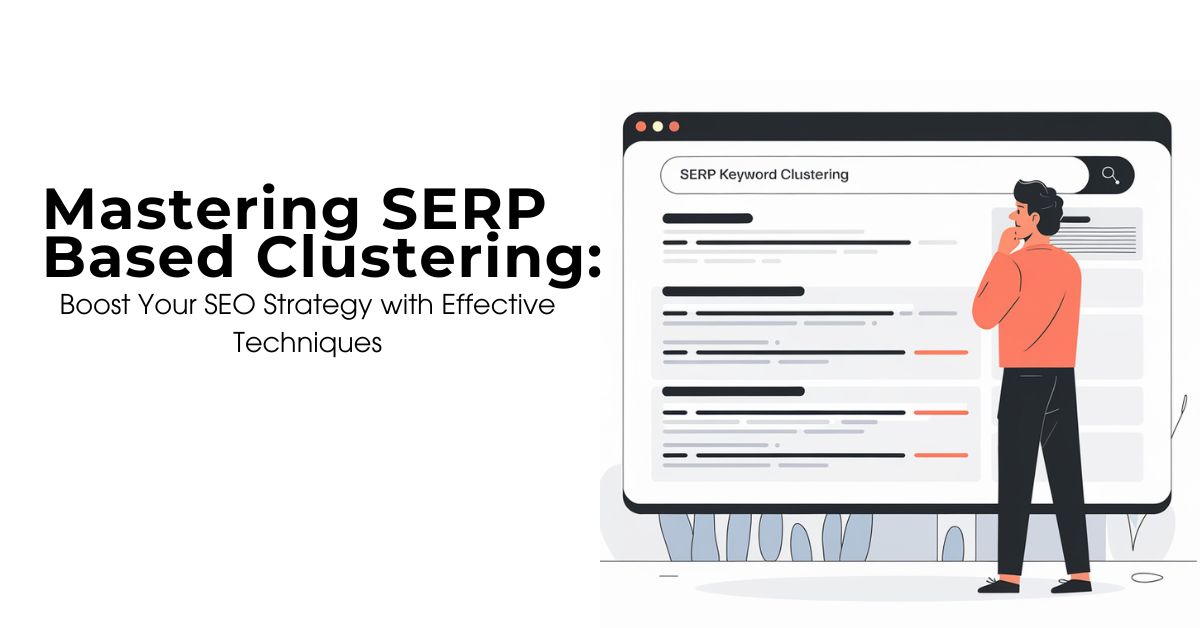What is SERP Based Clustering?
SERP based clustering is a sophisticated approach to keyword grouping that goes beyond traditional methods by focusing on search engine result page (SERP) data. Unlike conventional keyword clustering, which often relies on semantic similarities, SERP based clustering groups keywords according to their performance and ranking patterns in search results. This approach provides a more data-driven perspective, allowing you to align content more closely with actual search behavior.
- Enhances keyword targeting accuracy.
- Improves content relevancy to user intent.
- Provides insights on competitive landscape.
How SERP Based Clustering Works
Understanding how SERP based clustering operates involves delving into its core processes, each playing a crucial role in deriving comprehensive insights. Let’s break this down into key steps:
Analyzing Search Intent
The first step in SERP based clustering involves a deep dive into search intent, the underlying reason behind a user’s query. By analyzing how various queries rank on search pages, you can infer the intent guiding these searches, whether transactional, informational, or navigational.
Grouping Similar Results
Next, you cluster keywords that fetch similar results on SERPs. This grouping is informed not just by keyword semantics but also by the context and results these keywords trigger on search engines, ensuring that you’re capturing the user’s actual query context.
Comparative Performance Analysis
By comparing the SERP clusters against competitors, you can identify gaps and opportunities in your content strategy. This analysis allows you to adjust your SEO efforts, focusing on high-value areas overlooked by competitors.
Benefits of SERP Based Clustering in SEO
Integrating SERP based clustering into your SEO practices offers numerous advantages:
- Improved Content Relevancy: Tailor content to align more precisely with user search patterns and intents, enhancing engagement.
- Better Targeting: Focus on high-intent keywords and phrases that are more likely to generate conversions.
- Competitive Analysis: Gain insights into your competitors’ strategies by understanding common SERP behavior patterns.
- Efficient Resource Allocation: Direct resources towards optimizing content for the most strategically valuable clusters.
Implementing SERP Based Clustering: A Step-by-Step Guide
Now that we understand the essence and benefits of SERP based clustering, let’s walk through how you can apply this approach in your SEO strategy:
Step 1: Data Collection
Start by gathering robust data from SERPs related to your target keywords. Tools like Google Search Console, SEMrush, or Ahrefs can provide valuable insights into how keywords are performing on search engine results pages.
Step 2: Intent Analysis
Examine the data to determine the search intent behind each keyword. Look for patterns indicating whether users are looking to buy, learn, or navigate.
Step 3: Cluster Formation
Using the analyzed data, form clusters of keywords with similar intents and results. This step involves grouping keywords that trigger the same or similar results on SERPs.
Step 4: Content Alignment
Create or adjust content focusing on these clusters. Ensure that your content speaks directly to the user intent identified, increasing the likelihood of meeting user needs and ranking higher.
Step 5: Monitor and Refine
SEO is an ongoing process. Continuously monitor the performance of your clusters and refine your strategy based on changes in SERP behavior and user intent.
Tools and Resources
To effectively implement SERP based clustering, several tools can assist in data collection and intent analysis:
- SEMrush: Offers comprehensive keyword analysis and tracking of SERP features.
- Ahrefs: Useful for backlink analysis, competitor research, and keyword clustering.
- Google Analytics: Provides insights into user behavior and traffic sources.
Case Studies or Real-Life Examples
“A digital marketing firm utilized SERP based clustering to overhaul its content strategy, resulting in a 30% increase in organic traffic within six months. By focusing on high-intent keyword clusters, they were able to deliver more relevant content, improving user satisfaction and dwell time.”
Consider how such practical applications of SERP based clustering can transform your SEO strategy. The data-driven insights obtained through this method enable significant optimization opportunities, as exemplified by successful implementations across various industries.
Common Mistakes to Avoid
When applying SERP based clustering, common pitfalls can hinder your progress:
- Overloading on Data: Too much data can become overwhelming. Focus on relevant metrics that align with your SEO goals.
- Ignoring User Intent: Clustering without accurate identification of search intent can mislead content strategy.
- Static Approach: SEO is dynamic. Regularly update clusters in response to changing SERPs and user intent.
Avoid these mistakes by maintaining flexibility, focusing on relevant data, and continually assessing user intent.
Conclusion
In conclusion, SERP based clustering is a vital tool for modern SEO practitioners. By focusing on search intent and SERP behavior, you can optimize content relevance, improve targeting accuracy, and gain a competitive advantage. Embracing this data-centric approach allows for more strategic resource allocation and a deeper understanding of the competitive landscape, ultimately driving better SEO outcomes.
Call to Action
Ready to enhance your SEO strategy with SERP based clustering? Subscribe to our newsletter for more insights, or try our recommended tools to start implementing these techniques today. Transform your content strategy and stay ahead of the competition by leveraging this powerful strategy.







